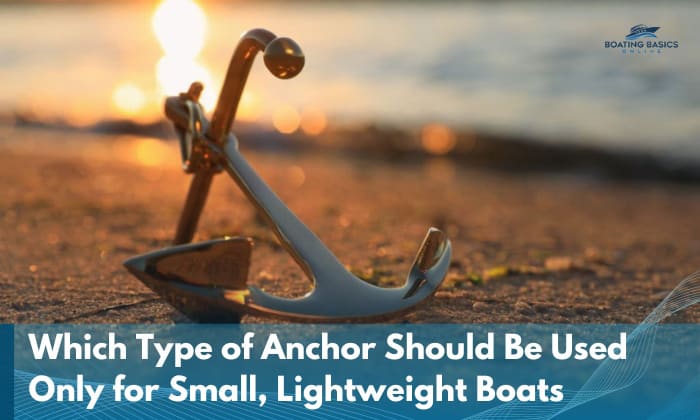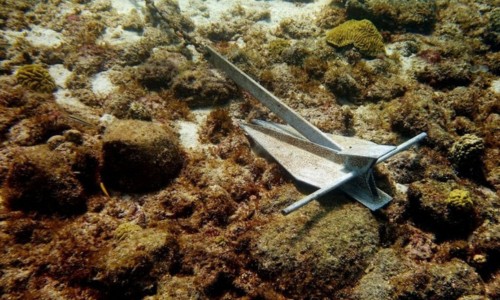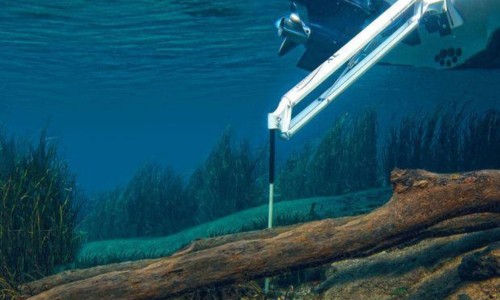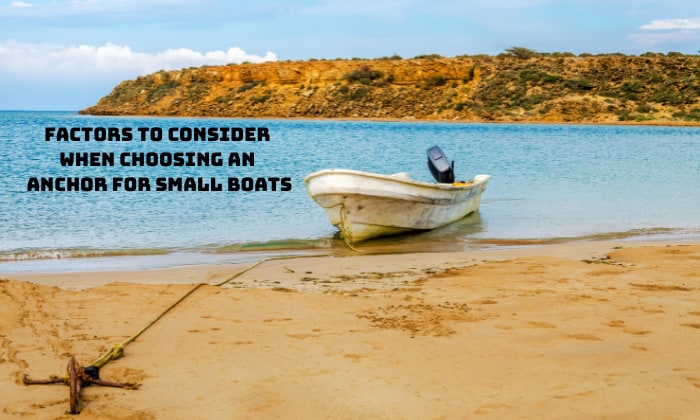Have you been wondering which type of anchor should be used only for small, lightweight boats? Commonly used options include Danforth and grapnel anchors – even mushroom anchors can work. You can also try specialized alternatives, like a StayPut anchor for thin water.
That said, it’s never ideal to solely base the anchor you’ll be using on boat size and type. You also need to consider the bottom you’ll be anchoring in, water depth, storage and handling, and personal preference.
Table of Contents
Recommended Types of Anchors for Boats That Are Small and Lightweight
When reading the anchors’ descriptions, you’ll notice how I immediately put the spotlight on the bottom rather than the boat’s size. That’s really what matters the most when deciding on boat anchors to use.
1. Danforth Anchor
If I’m going to make a single all-around recommendation, I’d choose a Danforth to partner with a small and lightweight boat in a heartbeat. Also known as fluke anchors, these can plow through and hold onto hard sand and mud with ease.
If you’re not already aware of it, most boaters choose to anchor in sandy bottoms because most anchors enhance their holding power by digging themselves into the ground. Danforths are basically designed to do just that, and they’re naturally durable.
Besides, Danforths are a great anchor for recreational boats and tinier watercraft because they’re lightweight and can fold flat for easy storage.
Dinghy Anchor Testing Part 1. Mantus, Bruce, Danforth, Grapnel, Mushroom. Anchor Test Video #77
2. Grapnel Anchor
There may be boaters who are quick to shun grapnels and quick to say that this anchor has little holding power. However, I can always make a case for them when anchoring in rocky bottoms, especially if you’re dealing with plenty of obstructions.
There’s a good reason why folks who like to use kayaks, canoes, and smaller fishing boats like this anchor. Plus, once it’s set, its hold is reliable enough that you don’t have to worry about it releasing.
Aside from the characteristics mentioned above, grapnel anchors are great for this size of a boat because:
- They’re often designed to be foldable and compact
- Not too hefty to carry
3. Mushroom Anchor
A mushroom anchor is a great small boat anchor on a sandy or muddy bottom because it mimics the same strategy that has worked for small watercraft in the past. Back then, people tie anchor lines to rocks and let the weight keep the vessel in place.
What makes the mushroom anchor different is that it’s designed to sink into the ground it’s deployed in. Once it has buried itself deep enough, it provides a more secure hold that isn’t affected by changes in the wind direction.
Aside from being only suitable for sandy or muddy bottoms, this anchor doesn’t have a strong holding power like the ones mentioned above. What’s sure is that a mushroom anchor works well for row boats and dinghies.
4. Anchor Poles
Anchor poles can work if you’re anchoring mostly in shallow water (usually no more than 24 feet). If you haven’t heard of the unique anchoring styles of products like the Power Pole and StayPut anchor, they’re usually well-loved by bass fishers.
This is because of the poles’ ability to quickly and silently keep your boat in place as you’re looking for the best catch of the day. The Power Pole is motorized, too, making it highly convenient to deploy.
These are bonafide “small boat” anchors, as their manufacturers make it clear that they only work for vessels less than 21 feet (as in the case of the StayPut anchor).
Factors to Consider When Choosing an Anchor for Small Boats
- Learn how to match it with the correct anchor chain.
- The anchor has to match the vessel’s weight and size.
- Any anchor for recreational boats should be deployed at the water bottom it’s appropriate for.
- Keep it as light as your vessel.
- Holding power should be decent, if not excellent.
Conclusion
So, to sum up my answer to “Which type of anchor should be used only for small, lightweight boats?”, you can choose a Danforth, mushroom, grapnel, or pole anchor. If you want the safest option out of all four, aim for the Danforth.
Of course, you have to make sure that you’re using an anchor correctly by prioritizing compatibility with the water bottom type.

“My intention from the first day establishing Boating Basics Online is to provide as much help as possible for boaters who want to experience a first safe and convenient trip. So feel free to join us and share your beautiful journeys to the sea!”






